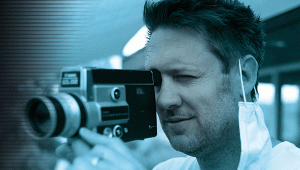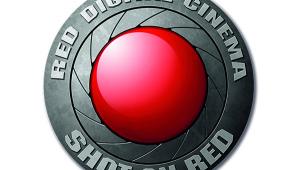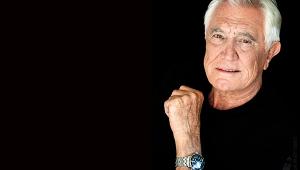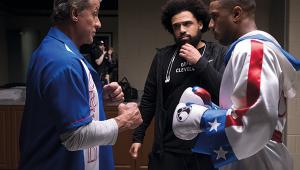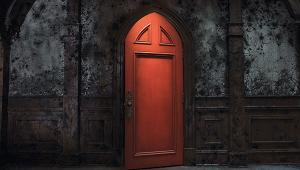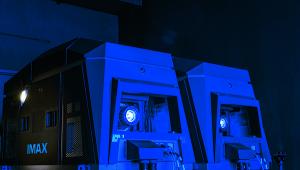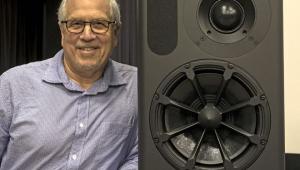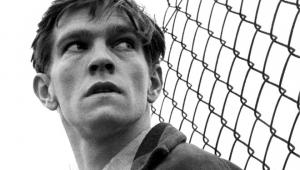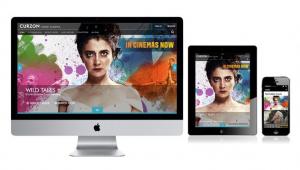Netflix plays its Cards right
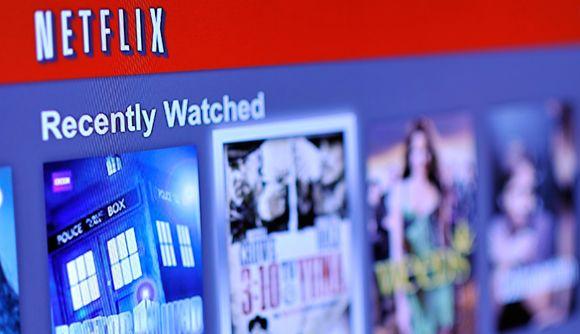
It may have taken several years to reach these shores, but subscription-based streaming service Netflix clearly hit the ground running when it made its UK debut in 2012, racking up more than a million customers in its first month of operation.
While its closest competitors continue to focus primarily on movies, a key part of Netflix's success in the UK appears to be its ongoing focus on TV content. Indeed, research released by the UK website Oric shows that as of January 2013, Netflix could only boast a catalogue of 1,668 films compared to the 3,284 available through Lovefilm Instant. However, when it came to TV material, Netflix offered 925 complete seasons (715 exclusive to the service) as opposed to just 589 via Lovefilm Instant (only 379 of which were exclusive).
Netflix recently took the next logical step and debuted the first original series made exclusively for its platform. Produced by David Fincher, the political thriller House of Cards stars Kevin Spacey and has won plaudits from critics and audiences alike. And it doesn't stop there. Easter sees the release of two more exclusive shows made for the streaming service – horror series Hemlock Grove and a fourth season of the sitcom Arrested Development.
I caught up with Todd Yellin, Netflix’s Vice President of Product Innovation, during the tech guru’s recent visit to London to chat about these developments and what the future has in store for the streaming service…
Thanks for taking the time to talk to us. To set the scene, could you tell us a little about your role as Vice President of Product Innovation at Netflix?
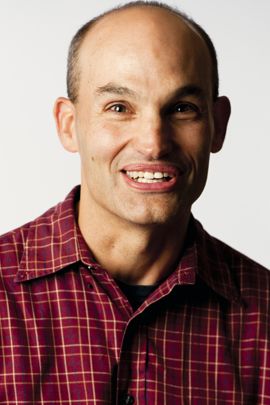
‘Sure. What that basically means is that I run a team who are in charge of innovating the Netflix member experience. So, we do a ton of A/B testing – meaning large-scale, double-blind testing where we’ll put 50,000 members in one experience and 50,000 in another, and we’ll see which one drives the metrics that indicate their satisfaction.
‘We do testing on two different fronts – below the hood and above the hood. Below the hood is really all about a lot of complex algorithms that drive a very simple goal – putting the right TV shows in front of the right person at the right time, and now on the right device. So, to get that right we’re incredibly privileged to be sitting on a mountain of data. We have over 33-million members and that number is rapidly growing. So we can really focus and hone, taking all this data and taking a lot of code and a lot of mathematics and leveraging all that to literally put the right stuff in front of the right people.
‘Above the hood is something that your readership knows well. Netflix was a pioneer in getting on such a plethora of devices. Its ubiquity was a rallying cry for us a few years ago. For a lot of these devices we were the first there and really opened up a whole new eco system for these video-based apps to be on these devices.
‘So, with that comes something quite challenging, which is that there are all kinds of ways you can interact with your TV. The old days of just clicking through two, three, four and going up, those days are now being split into a world where I can use touchscreen, I can use a mouse and keyboard, I can use a traditional candy bar-shaped left, right, up, down, I can use a game controller, I can voice, I can use Second Screen…
‘We are on the cutting-edge of trying new stuff and we’re looking back at how to get the old stuff right. So my team is constantly trying different user interfaces, designs and layouts and how we can make it brain-dead simple for users. I want 75-year old grandparents to be able to use this and I want cutting-edge 14-year old gamer boys to use it as well. So it has to work equally well for everyone.’
You mentioned Netflix’s need to get ‘the right stuff in front of the right people’, but what about allowing people to simply roam the service as they want and graze on whatever content takes their fancy at that particular moment?
‘When I was growing up in a suburb of New York City, back then it was about how much TV I could get. Maybe seven channels and that was it. In those days I had a copy of TV Guide and would just look on the listings to see what’s on. And ultimately I don’t even need that - I can just channel surf to see what’s on.
‘Then, as I got older, there was the explosion of cable. We went from a few channels to dozens to hundreds. But as it went to hundreds it still kept something – it was still using a technology and an interface that was wildly antiquated and not very functional. It’s a slow-scrolling EPG that’s just like, “Oh my God, what’s on Channel 107? I only have another hour to wait for this!” That was a real pain in the butt.
‘At Netflix we were forced into a situation where we had to be innovative, because now you don’t go from hundreds of channels, you go from thousands of individual pieces of content. Which is amazing! Users can watch whatever they want from this vast buffet of content. TV shows and movies? Just click and play whatever you want.
‘The challenge is that if you did an EPG, where every single title could be scrolled through, then you’d shoot yourself in your head. And we don’t want that from our users [laughs]. So even though we’re trying to bubble the right stuff up for an individual up to the surface, we also want to make it easy for them to navigate through the entire catalogue if they want to. And that’s a big challenge - particularly in a TV environment. Because its one thing to do it using touchscreen controls, which is easy. But it’s another thing altogether when you’re talking about a left, right, up, down controller. That’s a really hard thing to get right. Which is why personalisation and bubbling up becomes even more important in the traditional TV environment.
‘It’s incredibly complex. Even just doing a Top Ten is really tough. Name a genre…’
Let’s go for horror.
‘Okay, so I could pay attention and know that Anton watches horror films. The last five things you watched were all horror films. So if I really wanted to exploit that information I would show you ten horror films. And that’s all I would show you.
‘But the problem is that occasionally you might want to watch an action film or a drama. If I only show you horror, that would only be climbing one small mountain, not opening up the whole mountain range to you. So we have to put diversity in there. At the same time, I want to show you enough horror, because I already know it’s what you like. But I don’t want to show you too much horror to the point where there’s no diversity. And then we have to think how far to push you. If your horror is mainly like, are you in to super gore or psychological or what? Anything? Then I’d better show you a wide range of other stuff just in case.
‘Now, if I’d never gotten a signal on whether you like an action film, should I risk putting one in there? Or you might think that we’re idiots if we put The Expendables in there and be “I hate that crap. I told them horror, fools, so put in horror”. So we have to balance off credibility, diversity, we have to look at what you’ve watched recently. Maybe a year ago when you were with Netflix you watched a couple of romantic comedies, now we have to puzzle out - Did he watch those out of choice, or what that a one-off because the girlfriend he used to have?
‘So we have a tremendous amount of data on our subscribers. What they’re watching. How much of it they watch. What device they’re watching it on. But to shape that into a picture, to get to the nirvana state, the utopia, is pretty much impossible. But to get it to our front end and evolve it, to walk into a thing where we can show you different things, the feel-good comedies and the dark action, and still show you a Top Ten and still show you Popular? This involves so many moving parts. There’s a ton of data. But some of that data is useless and some of it is incredibly valuable. Figuring out the wheat from the chaff? I have guys who have four degrees from MIT helping me figure that out because it’s really hard.’

Moving over to the content itself, which is the bigger concern for Netflix – Movies or TV shows? And are there any plans to move into other areas such as sporting events?
‘We’re monomaniacal in how much focus we have in what we are. I’ve been asked before about sports and news, but those aren’t in our plans. We’re very much about entertainment content.
‘The way content is going now… Look, I used to be a film snob. I would always go to the movies and hardly ever watched TV shows. As far as I was concerned TV was idiotic, not very good. But TV has gotten amazing. Now there are shows that I completely love. Breaking Bad is an incredible show. I’m proud that we did House of Cards. And they’re not the only ones. There are a lot of great shows out there. You have people from film – the great actors and directors – doing both now. So they’ve made it up to a level of entertainment.
‘The only difference these days is running length. A movie is a stand alone piece of content that just happens to be defined as anything running between 75-minutes to three-hours, or whatever. Whereas a TV show, well in the UK you guys define a TV show differently from how we do in the US. For you a series is like five episodes and done. In the US we’re more used to like 20 episodes. And now with premium TV there’s 13 episodes per season. So it’s just arbitrary. It’s just chapters in a book – and it could be a novel, a novella or a short story. We’re just out there to do great stories, whether it’s drama, comedy, sci-fi, the gamut. And that’s honestly how we look at it. It’s all just great content.’
You mentioned House of Cards there, which recently launched to great critical success. I’m guessing it must be quite a relief to have this first original Netflix series out there and see it fare so well.
‘We’re thrilled. It makes me so proud to be at Netflix because I love the show. And I don’t know that I’m personally going to love all the Netflix originals, because we’re not just aiming for Todd S. Yellin - we’re aiming for a very diverse base of people. House of Cards came out of the gates really quickly and we weren’t sure how it would do. But it seems like members love it, critics love it and it’s getting streamed all the time. It’s been exciting.
‘You know what makes it easy for me? If this were being done on the traditional broadcast model, I would have had to walk in here and tell you how it’s not coming to the UK for the next six months. But with Netflix it’s global. A lot of these boundaries are broken down. Why shouldn’t we release it in the UK, Sweden and Brazil all at the same time as the US?
Netflix has already announced several other original series originating in the US including new episodes of Arrested Development and the Eli Roth-produced Hemlock Grove. Is there scope for Netflix original programming to come from outside of the US?
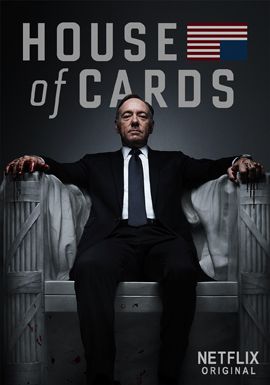
‘We’re open to a lot of possibilities with original content as it becomes more and more global. So it really becomes around where you’re shooting it, who the talent is and a lot of this stuff. It’s so much fun to watch British actors do American characters, and Australians do that too. And they do it flawlessly and I want to criticise them but they rarely lapse out of it.
'I suppose we got an American, Meryl Streep, to play Thatcher in The Iron Lady, so it goes both ways. Talent crosses borders. So we’re open to it – If there’s a great story that takes place in the UK that we find and we want to do an original for it, we’ll just licence something from the BBC or some other British producer.’
You made all 13 episodes of the first season of House of Cards available to stream on the same day. Is this sort of release pattern something we’ll see for all original content on Netflix?
‘We’re not married to always doing anything. We’ll try a lot of stuff at Netflix and it might be or it might not be – and I’m totally being candid . It seemed to work terrifically well with House of Cards, we’ve been paying close attention. It was an experiment.
‘I’ll tell you what we won’t do at Netflix, which is we won’t have like originals will come out on a weekly basis at 9pm on a Sunday, That’s not what we need to do, because we’re going to give value over years.
‘So, does that mean that we won’t have different release patterns? Maybe we’ll release another show half a season at a time because we can get it out more quickly to them. Or maybe there’s a case to be made for releasing three episodes at a time to really speed things up. I don’t know, but we’ll figure it out.’
The move into original programming also seems like a clever way to get around the fierce bidding wars that have been going on for the past year over exclusive streaming rights to film catalogues. Speaking of which, is there not a chance that this type of studio exclusivity might fragment the streaming market to the point where people just get frustrated with it?
‘I’ll tell you one thing: from a consumer point of view you always want competition. You don’t want any one company to control it, because that helps with pricing. So competition is always good for the consumer, first of all. Call me an Adam Smith disciple or whatever, but that’s how I look at that. And the way we view competition at Netflix is that it keeps us on our toes and pushes us. It pushes my team and me from the product side and the member experience. We keep on pushing at the user experience, pushing at personalisation to make it smarter, pushing to keep it brain-dead easy on as many devices as possible.
‘So keeping us on our toes is one thing. Another positive perspective on competition is that there’s an eco system that’s growing, that’s brand new. And that eco system is the over-the-top, streaming, watch it when you want evolution of where TV is going. Not all TV – not sports, not live stuff, not news – but your dramas, your comedies and all that. So as that eco system grows, and as a whole new generation grows up with that as all they now, and as an older generation like us are just learning to do it, then that’s a good thing, because that’s a bigger pie for all of us to slice up. So they our competitors help prop up the eco system and make people more comfortable with streaming stuff on demand.’
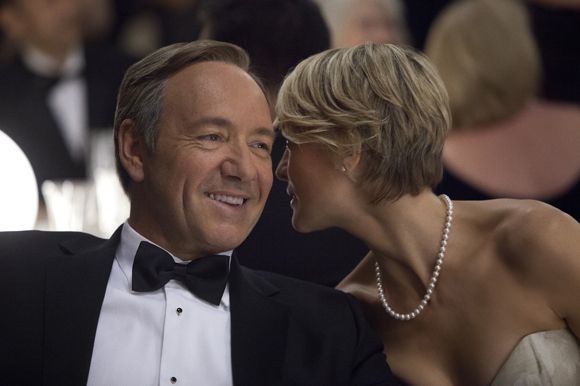
Over in the US Netflix continues to operate a DVD and Blu-ray rental service alongside the streaming model. How is that side of the business holding up – and was there ever a time where you considering launching a similar operation in the UK?
‘It’s still doing well for is in the US. We still have many loyal DVD users. We have many millions of people who are using both DVD and streaming – I’m among them. So, it works. It’s alive and well.
‘The reason we didn’t launch it in the UK is because we see the future is click and play. When I look at my kids, shipping a disc back and forth is going to take an eternity. So they’ll just click and watch what we have on streaming from the catalogue. They barely even know about Netflix DVDs. My wife and I, we’re the old fogeys, we’re using the DVDs. And it’s good, you know, we have a lot of loyal old fogeys in the US.’
Looking forward to the future, what can you tell us about the technological developments that your teams are working on at Netflix?
‘We’re working closely with a lot of industry partners to try different models of how you would interact with your TV screen. Of course, you could always use the remote, but it’s far from ideal. But what about Second Screen? We’re doing a lot of experimentation, because the idea of using my iPad to navigate Netflix on my TV is important. The only question is how quickly will consumers adopt it and is it really the right device for the purpose? We know these tablets are selling incredibly well and people are streaming Netflix like crazy on them. But will they have it on their coffee table? Will it be close enough to the TV to always use as a controller?
‘Maybe the better alternative is my smartphone. Will I get Netflix on this? Well it’s not as good as my iPad, it’s a smaller screen and is slightly harder to navigate. But wouldn’t it be amazing in the future if Netflix wasn’t just on your TV or you computer or on one device, but your smartphone was Netflix and it was always in your pocket. So whether I go to a hotel or a friend’s house my Netflix identity was always in this thing? Now, that could take years. This isn’t tomorrow. But we have early stages of it out in the marketplace now. It’s baby steps.
‘We’re also working on voice. On that front there’s the idea of you talking to devices, much as I use Siri on my iPhone. Although what I mainly use Siri for is to entertain my kids because it’s not very accurate right now. But that’s what they used to say about what we do at Netflix. The question is: will voice recognition be there in two years or will it be ten years? It’s going to get there. I’m very confident. It’s come a long way. It’s laughable right now, but it’s come a long way. The only issue is that I only have so many engineers and designers working at Netflix that my team can use those resources. So we have to figure out how much do we put in voice. If it’s ten years away I should barely be investing in it. If it’s two years away, I’d better get on it and better get on it now.
‘But I’ll tell you one voice thing that’s worked well for Netflix in tests and we expect to be rolling out in the next year or so, which is that the UI talks to you in an engaging, fun way. So, we have something called the Max UI, where the user interface is actually called Max, and Max will help you find something great to watch. We tried that in a small test, it did well. Now, it takes a long time to productise.
'When it comes to voice control, an advantage we have over an Apple or Google is that we are, like I said earlier, just monomaniacally focussed on TV shows and movies. Because of this our space is very well defined. God, I might ask Siri or Google Voice absolutely anything. And you have to make it so they know how to respond even if you’ve no idea what kind of curveball they may be thrown. Over at Netflix we know that people are basically going to be asking about what to watch. So we know the basic set and if we can get that right – it’s still really hard – we feel we can be on top of the system.’
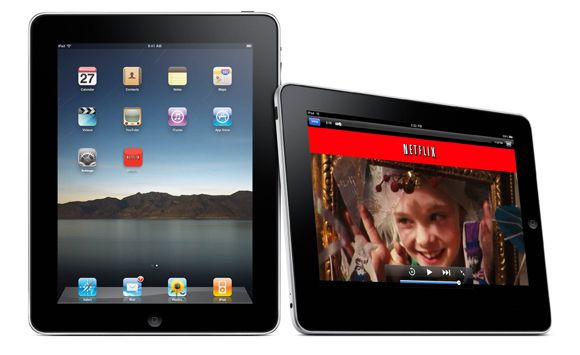
That’s pretty exciting stuff…
‘Totally, I’m kind of psyched about that. But I’m going to show you something that I haven’t shown to anyone in the whole world yet… Here’s a PowerPoint I’m working on for a presentation I’m giving to a bunch of studio guys on Thursday talking about the future of Netflix. This way I get to practice on you…
‘Personalised content goes from good to great, so how do we get better in personalisation? Well, in the perfect world this would be the entire UI of Netflix [point to a poster for Matilda on a PowerPoint slide]. I would start the Netflix app and it would instantly come up with this. After all, why go through thousands of piece of content? Because if I could totally read your mind and know exactly what you want to watch, that one exact perfect thing should come up. Why Matilda? Well, my six-and-a-half-year old son and I have been reading together Roald Dahl books. He read Charlie and the Chocolate Factory, and we just finished James and the Giant Peach and Matilda. So I told him that if he read a certain amount of Matilda on his own and I read a certain amount out loud to him, we could watch the movie afterwards.
‘So that is the perfect goal state. The challenge is, of course, we can’t do that. But how can we get there? One of the things is that we pay attention to what people watch. But that’s not going to help on Matilda, because I’ve been watching House of Cards, Breaking Bad and a bunch of dark indie films. I haven’t been watching anything close to Matilda. So that would be a tough one. And when my kids watch it on their own, they watch cartoons and they watch Disney Channel stuff I would never watch. So this is a good intersection, how would it get to me?
'Well, if it could take other things I did – which we’re just experimenting with, we haven’t even come close to launching, this is just in brainstorming stage – if it knew what books I was reading and saw that I ordered a book and we read that book electronically, or it knew what music I’ve been listening to? So we’re going to do testing along those lines.'
 |
Home Cinema Choice #351 is on sale now, featuring: Samsung S95D flagship OLED TV; Ascendo loudspeakers; Pioneer VSA-LX805 AV receiver; UST projector roundup; 2024’s summer movies; Conan 4K; and more
|


